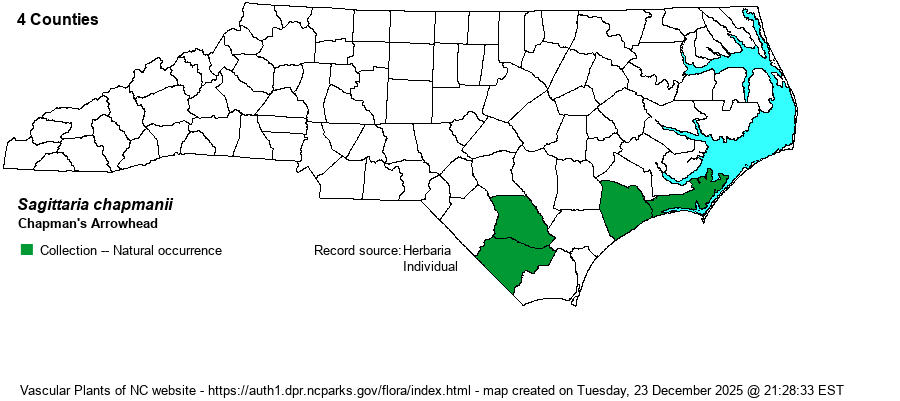Show/Hide Synonym
| taxonName | relationship | relatedTaxonName | relatedTaxonRefText | relComments |
|---|
|
| Sagittaria chapmanii | = | Sagittaria graminea ssp. chapmanii | Flora of North America (1993b, 1997, 2000, 2002a, 2002b, 2003a, 2004b, 2005, 2006a, 2006b, 2006c, 2007a, 2009, 2010) | | | Sagittaria chapmanii | = | Sagittaria graminea var. chapmanii | Godfrey and Wooten (1979, 1981) | | | Sagittaria chapmanii | = | Sagittaria graminea var. chapmanii | Kartesz (1999) | | | Sagittaria chapmanii | = | Sagittaria graminea var. chapmanii | Wunderlin & Hansen Flora of Florida (3) | | | Sagittaria chapmanii | = | Sagittaria graminea var. chapmanii | Haynes, Les, & Holm-Nielsen in Kubitzki (1998b). | | | Sagittaria chapmanii | = | Sagittaria graminea var. chapmani | Haynes, Les, & Holm-Nielsen in Kubitzki (1998b). | , orthographic variant | | Source: Weakley's Flora |
|

